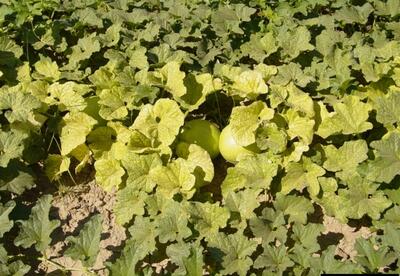
Figure 1. Positive result observed using new ImmunoStrip® for Pantoea stewartii subsp. stewartii (PStew)
--- FOR IMMEDIATE RELEASE ---
Agdia, Inc. (Elkhart, IN) is happy to announce the commercialization of an ImmunoStrip® assay for the detection of Pantoea stewartii subsp. stewartii, the causal agent of Stewart’s wilt on corn.
Pantoea stewartii subsp. stewartii (Syn. Erwinia stewartii), previously Pseudomonas stewartii, is the species of bacterium responsible for Stewart’s wilt on field or dent corn (Zea mays), sweetcorn (Zea mays subsp. mays) and popcorn (Zea mays subsp. everta). Disease symptomology was first observed in the late 19th century; however, definitive claim to the initial discovery is subject to debate. In the late 1880’s, T.J. Burrill described a new bacterial disease of field corn in southern Illinois. Despite isolating bacteria from symptomatic plant tissue, Burrill was unable to inoculate field corn plants for further study. Thereafter, symptomology was attributed to drought, high pressure from chinch bugs and the unknown bacteria. Many believe Burrill’s was the first description of what we now know to be Stewart’s wilt.
In 1895, F.C. Stewart described a bacterial wilt disease of sweet corn in New York. Stewart was able to isolate the bacterium and complete Koch’s postulates on sweet corn, thus allowing for his name on the pathogen and the disease. Initially, the genera was Pseudomonas, and Stewart believed seed to be the primary means of dissemination. It was not until 1923 that the corn flea beetle, Chaetocnema pulicaria (Coleoptera) was identified as the primary vector of the bacterium, with seed playing a lesser role in the epidemiology of Stewart’s wilt.
Since its characterization, P. stewartii subsp. stewartii has been confirmed in several countries. Nevertheless, these occurrences are infrequent, and the pathogen has not established itself outside of North America. The bacterium is endemic throughout the Ohio River Valley, Mid-Atlantic region and southern corn belt states, and its distribution coincides directly with that of its insect vector. All types of corn can be infected, but sweet corn and popcorn varieties experience greater losses than hybrid field corn varieties. This is due primarily to the durable levels of resistance that have been bred into field corn hybrids, making notable yield losses sporadic in North America. Varying levels of resistance are available in sweet corn and popcorn; however, susceptible varieties are still widely grown due to their desirable agronomic traits. Significant outbreaks of Stewart’s wilt are still common in sweet corn and popcorn throughout the pathogen’s range of distribution.
Pantoea stewartii subsp. stewartii overwinters in the digestive tract of adult corn flea beetles, which emerge from the soil in the Spring. Beetles feed on corn seedlings and transmit the bacterium to feeding wounds via their fecal matter. Subsequent generations of beetles feed throughout the season, infecting plants in multiple stages of development. Symptomology phase and severity varies according to varietal resistance and growth stage at time of infection. Systemic vascular wilt occurs in susceptible varieties when plants are infected as seedlings, resulting in overall plant collapse and death. Leaf blight occurs in later stages of plant maturity and can affect varieties with variable levels of resistance. Leaf blight symptomology includes water-soaked lesions, chlorotic and necrotic streaking, and leaf deformation. Lesions can coalesce to encompass total leaf area in susceptible varieties, predisposing plants to opportunistic fungal pathogens. Moreover, susceptible varieties can experience systemic wilt as late as the V9 stage, whereas infections typically remain localized on resistant varieties throughout the season.
Seed transmission of P. stewartii subsp. stewartii is possible and inversely proportional to the level of resistance present in the variety. Many hybrid field corn varieties are highly to moderately resistant to Stewart’s wilt, making seed transmission insignificant. In contrast, sweet corn varieties are moderately resistant to highly susceptible. Nevertheless, seed transmission is unimportant to the epidemiology of Stewart’s wilt in areas where the bacterium and insect vector are endemic. Several countries place some level of quarantine restriction on corn seed for P. stewartii subsp. stewartii.
While domesticated corn varieties are the most important hosts for the bacterium, it has been isolated from several species within Poaceae, including common wheat (Triticum aestivum), eastern gamagrass (Tripsacum dactyloides), rice (Oryza sativa), Sudan grass (Sorghum sudanense) sugarcane (Saccharum officinarum) and corn’s wild progenitor, teosinte (Zea mays subsp. mexicana). It is possible many of these function as weak alternative hosts for P. stewartii subsp. stewartii. Moreover, the bacterium is documented to cause Stewart’s wilt on lucky bamboo (Dracaena sanderiana) and bronzing disease on the dicot jackfruit (Artocarpus heterophyllus).
Agdia’s new ImmunoStrip® for detection of P. stewartii subsp. stewartii was developed to detect multiple isolates of the bacterium from a wide geographic range. Moreover, no cross-reactivity was observed with an extensive exclusivity panel, including Clavibacter michiganensis subsp. insidiosus, Clavibacter michiganensis subsp. nebraskensis, Clavibacter michiganensis subsp. tesselarius, Pseudomonas syringae pv. syringae, Ralstonia solanacearum, Stenotrophomonas maltophilia, Xanthomonas albilineans and Xanthomonas campestris pv. campestris. Cross reactions were observed with Erwinia amylovora, Pantoea agglomerans and Pantoea ananatis. This ImmunoStrip® can be used to test leaf and stem material.
The Pantoea stewartii subsp. stewartii ImmunoStrip® is sold in kits of 5 or 25 strips, and kits include everything necessary to perform a test. Agdia provides a one-year warranty on all purchased products. A diagnostic assay for the detection of this pathogen is also available in an enzyme linked immunosorbent assay (ELISA) format. For more information on these products, in addition to Agdia’s full catalog of pathogen detection products, visit the company’s website at www.agdia.com, e-mail info@agdia.com, phone 1-574-264-2615 (toll-free 800-622-4342) or fax 1-574-264-2153.
ImmunoStrip® is a registered trademark of Agdia, Inc.





